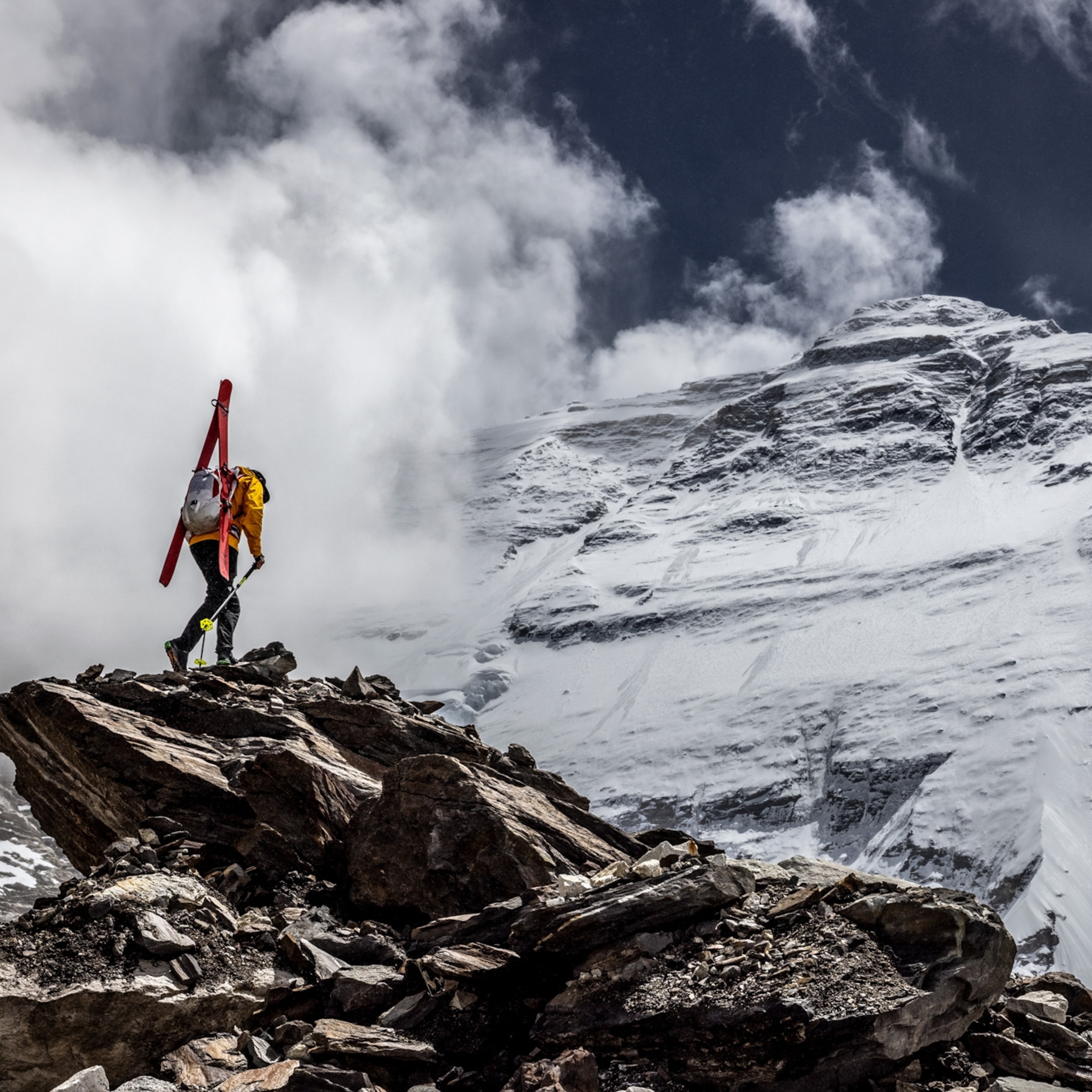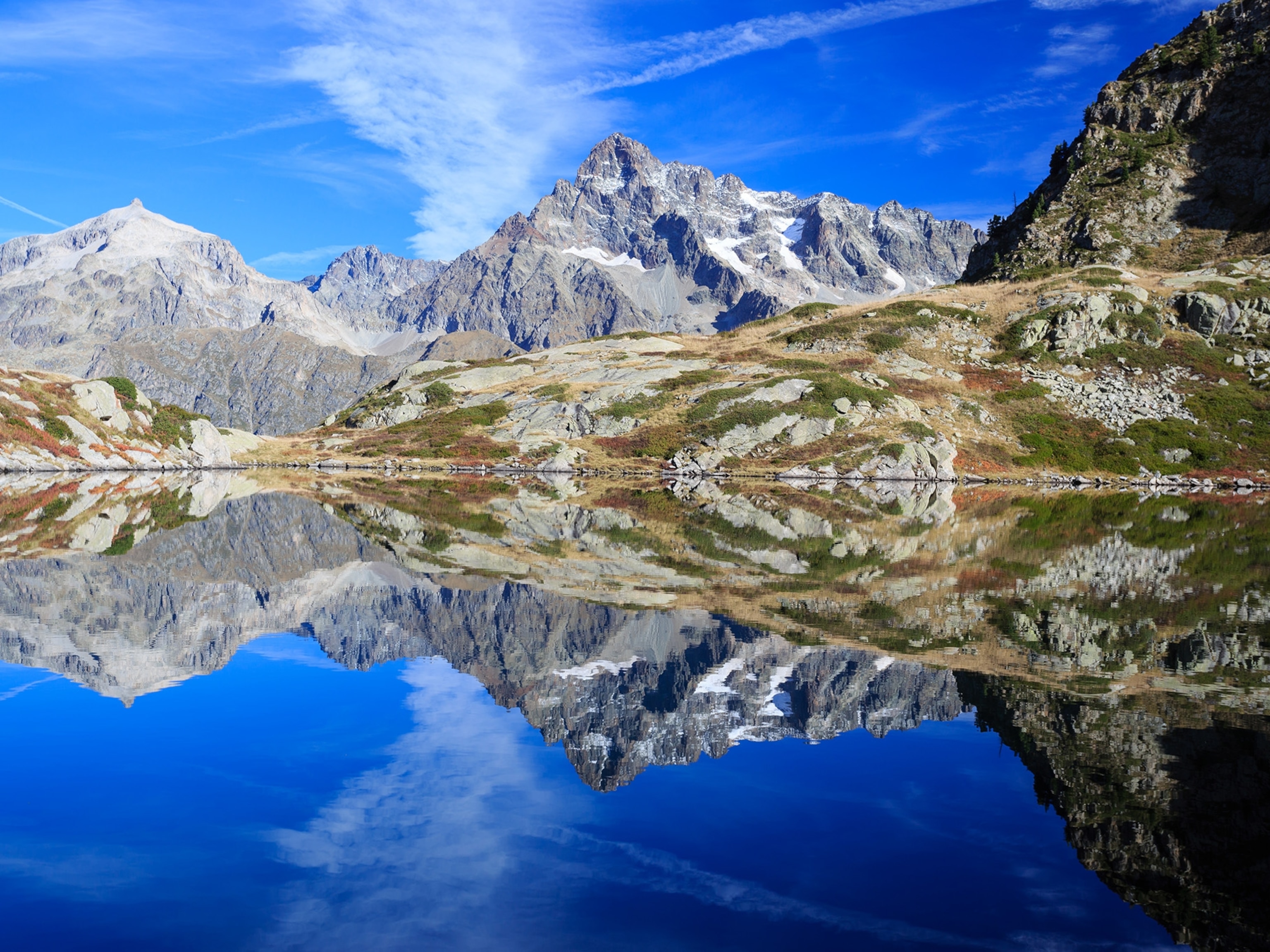
Alpinist Ueli Steck
A climber completes a lightning-fast solo climb of a difficult and deadly Himalayan face.
The When it comes to Annapurna, climbers who take on the Himalayan peak have a saying: Annapurna is dangerous from the north; dangerous and difficult from the northwest; and steep, dangerous, and difficult from the south.
In October 2013, alpinist Ueli Steck was alone at about 7,000 meters on the notoriously dangerous, steep, and difficult south face of the 8,091-meter peak. The proposed route he had chosen had a legendary reputation. In 1992, Jean-Christophe Lafaille had to down climb and rappel from tent stakes after his partner, Pierre Béghin, fell to his death two-thirds up the face. The line remained incomplete.
Above Steck, the winds raged, but the forecast called for a calming trend during the night. Steck decided to set up his tent and rest before his final push. Known as “the Swiss Machine” for his long history of speed climbs along technical mountain terrain, Steck scrambled over snow and ice to a rock outcropping that looked like it might offer shelter. What had seemed promising from below turned out to be bulletproof, 50-degree ice that provided a perfect view of the ice runnels and golden rock of the upper face. Steck, who carried no supplemental oxygen, placed the picks of his ice tools, trusting his weight on them before taking off his down glove and pulling out his tiny point-and-shoot camera to snap a photo. He snapped one photo, and then a small avalanche hit.
“I was hanging onto the ice tools. I could feel the pressure of the snow coming from above. There’s only so much before the pressure pulls you off,” remembers Steck, who lost his camera and outer glove as the snow poured down, threatening to pluck him off the mountain. “Eventually, the pressure released. The snow passed. My body was shaking. Something switched in my head. I was pretty sure I wasn’t going to survive. I had to try and climb and enjoy every moment.”
He was lucky to survive. Steck regrouped. He set up his tent in a crevasse at 6,500 meters to wait for the wind to die down before taking on the difficult climbing. Just after sunset the unroped Steck made speedy progress through a maze of steep ice steps and rock bands. Sometime in the early morning hours of October 9, he reached the summit, reversed course, and made the equally risky descent back down the route he’d just climbed via a series of rappels and down climbs. With his camera gone, there was no summit photo to prove his claim. Steck also carried a GPS-enabled watch, but failed to turn it on. Even as he descended to complete a 28-hour round trip, Steck, who is accustomed to being in the media spotlight when he’s on flat land, knew there would be questions about the veracity of his climb.
“I knew I didn’t have proof, but this is how it happened. I lost the camera. I couldn’t change that,” says Steck of the suggestion that the ascent was fabricated. “If I said it didn’t matter to me, I would be lying. It feels personal, but I just have to accept it. There are people who believe that Americans didn’t reach the moon.”
Steck has a long history with Annapurna’s south face. In 2007, alone and unroped on gentler snow slopes that mark the beginning of the face, he escaped death after a falling rock struck him in the head, causing him to tumble 1,000 feet down snow slopes. Climbers found him wandering disoriented on the glacier beneath the face. He returned in 2008 with a partner, but when Spanish mountaineer Iñaki Ochoa de Olza suffered a stroke high on the mountain, Steck initiated a rescue and carried medications from base camp through thigh-deep snow up to Camp 4, where Ochoa lay incapacitated in his tent. Steck administered medication, but Ochoa died the following day. Steck buried his body in a crevasse and returned home, still intrigued by the stunning but dangerous face.
“You have to accept something like the south face requires a lot of effort,” says the 38-year-old climber.
In 2013, Steck returned to Annapurna with seasoned climber Don Bowie. Bowie decided to stay behind at base camp due to objective hazards on the face. This left Steck with a difficult decision—abort his attempt yet again or go solo.
“In 2007, I was convinced that it was a good solo, but I chose a partner when I returned. Being there three times, I felt ready. I felt I had the skills. I decided I had to try,” says Steck, noting that in hindsight that decision may have been too risky. “For me, this kind of climb and style was something I should do just once in a lifetime. If you keep trying routes like this, you are going to die. If you ask me, I took too much risk.”
In March 2014, the jury of the Piolets d’Or, the prestigious award given annually to the most impressive ascents, decided to honor Steck despite the lack of photographic evidence and GPS proof. There is a long tradition of taking climbers at their word versus relying on photographic evidence, which can also be faked. He won the honor jointly with last year’s Adventurers of the Year, Raphael Slawinksi and Ian Welsted, who established a new route up the previously unclimbed K6.
—Fitz Cahall
THE INTERVIEW
National Geographic Adventure: You are known for your speed solos in the Alps. You had intended to do this with a partner. What made you believe climbing solo on Annapurna would work?
Ueli Steck: I have to be honest, this is the biggest climb I’ve done. If you asked me right now, I have to say I took too much risk. I had the avalanche hit me at 7,000 meters. After the avalanche, I accepted that I might not come back alive. I was just climbing, totally accepting that it might be a one-way ticket. It’s that fact that made it possible to climb in this style.
NGA: Do you think you will continue to do routes in the Himalaya in this style?
US: You can, maybe, do something like Annapurna once in a lifetime. Then don’t try to do it again. I really know I don’t want to do a route like this again in this style.
NGA: You were just recently involved in an avalanche on Shishapangma that killed two climbers. You were with a team on an easy route and something bad still happened.
- National Geographic Expeditions
US: I was on Shishapangma with my wife on holiday. It wasn’t hard. We had skis. It’s an 8,000-meter-peak, of course, but it’s almost no risk compared to Annapurna. It’s an endless discussion. When you go to the mountains, you really have to accept that there is always a risk. It’s more dangerous than sitting at home watching TV. It’s really sad.
NGA: This Annapurna climb obviously was a pretty big accomplishment that you worked toward for a very long time. Has it been difficult to hear people suggest that you fabricated the ascent?
US: I knew right away. I called my friend and said, “I lost a camera. I have no proof.” Every journalist I’ve talked with I’ve said, “I have no proof. You can write about this or not.” I can just be honest. The rest, I cannot change it. For me, personally, it was a really big success in my career. I can understand why people doubt. I don’t have proof. I just have two people [Sherpas lower on the mountain] who saw my headlamp just beneath the summit.
NGA: Your Himalaya trips haven’t gone smoothly. In spring of 2013, you were involved in a fight that erupted on the side of Mount Everest between roughly 100 Sherpas and you and two other climbers. It was a big deal internationally, but personally how did that event change your perspective?
US: It was one of my worst experiences I’ve ever had. I lost a lot of confidence in people. I could not have imagined what happened that day. The question of who was right and wrong—that’s an endless discussion. Even if we made a mistake, there is never a reason to get that violent. I became much more careful. It changed me. Maybe for the positive. I spent a lot of time talking to people, trying to understand what happened and the situation on Everest and in Nepal. I can understand what happened.
NGA: It seems like there have been some bad sides to climbing. Why do you keep climbing? What keeps your imagination on fire?
US: I really love climbing. I spent my whole day climbing a crack that I’ve probably done a thousand times, but right now I’m happy. I climbed with a friend. Spent the day out. I look forward to that. I love that. It’s like a living process. You start out and you see the Eiger north face and you think “That’s impossible.” Then you start to dream. Then you climb the Eiger north face. Then maybe you go to the Himalaya. Right now I’m just focused on the 8,000-meter peaks. I don’t know what’s next. I don’t think I will get tired of climbing.






